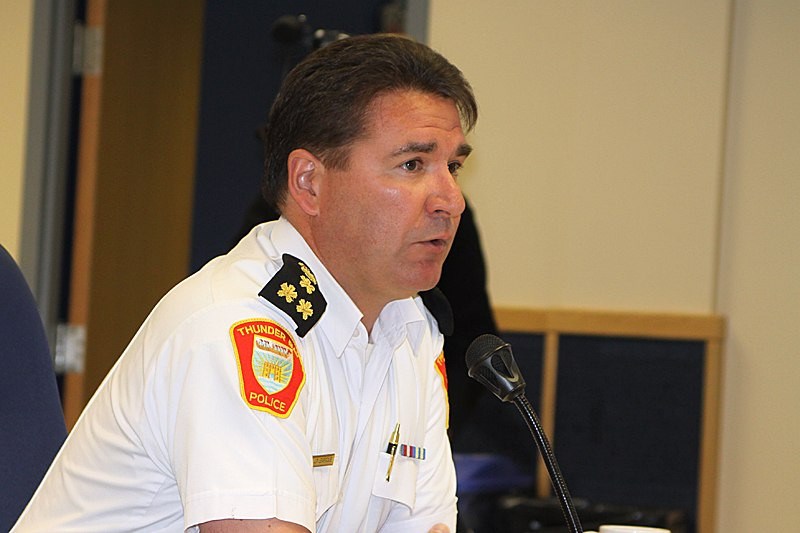Emergency services will be able to track the location of mobile phones that call 911 by the end of 2014.
The Thunder Bay Police Service Board announced the requirement to update its 911 dispatch service to comply with upcoming federal CRTC regulations at its regularly scheduled meeting Tuesday.
The force does not have the ability to track the location of a mobile phone calls, and with the emerging prevalence of cell phones the new regulation is vital to ensuring dispatchers can do their jobs effectively, said Thunder Bay chief of police J.P. Levesque.
“We see the decrease in landlines and more cell phones coming into play,” Levesque said. “We expect that is only going to increase.”
With the current system, dispatchers are only able to determine the location of a cell phone call if it is provided by the caller. Levesque calls this system is troublesome.
Other measures that have to be implemented is a 911 text messaging service for hearing and speaking impaired people by the end of 2014, as well as full 911 texting service available a year later.
To be able to use the texting feature in 2015, those with hearing and speech impairments must register.
Levesque told the board a $16,000 down payment has already been made to have a company come in and look to implement the necessary software.
He also advised the board to allocate $300,000 in the 2014 capital budget for the project, and said timeliness is crucial to beat the rush of other municipalities implementing their upgrades.
“I don’t think there’s anybody denying that we’re going to have to do this,” Levesque said. “Somebody is going to have to take the first step and say that we’re going to need capital money for this, and that it’s going to have to come out of somebody’s capital budget so we put it in ours.”
The new regulations, such as the ability to accept video 911 submissions, will serve as a positive for policing purposes but have the potential to cause logistical nightmares.
Levesque said that the ability to accept video would significantly enhances his force’s investigation practices, but for legal reasons can get expensive very quickly.
“I think this is the new reality that we’re seeing with that means of communication,” he said. “Certainly having that video is going to enhance our ability to enforce and detect crime, but what goes with that is not only having to capture it but storing it for court purposes.”
The board tasked Levesque with consulting with other local emergency services, such as EMS and fire, to determine the possibility of working together. The board also requested approaching tbaytel to determine if they could provide assistance in creating a new system.
At the meeting the board approved a $1,500 funding request from the Prevent Alcohol and Risk-Related Trauma Program from the Thunder Bay Regional Health Sciences Centre for the second straight year. Last year the program had 12 sessions to educate youth about the potential trauma and risks involved with alcohol, and two at local high schools.
Program co-ordinator Shelley Chisholm said this year she is aiming to up the number of sessions at high schools to four or five, and build on one at Churchill high school about having a safe graduation.
